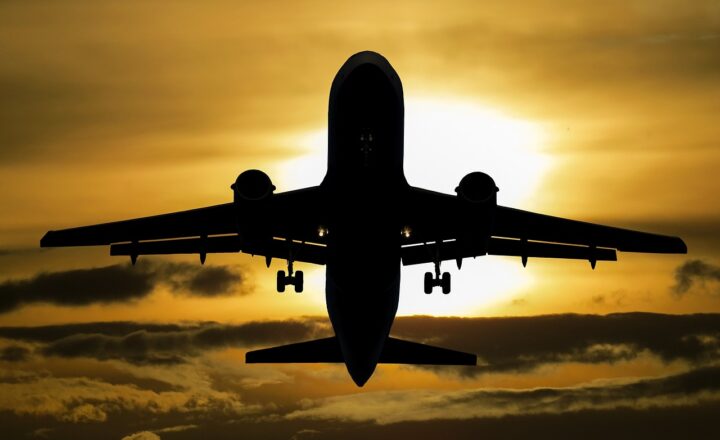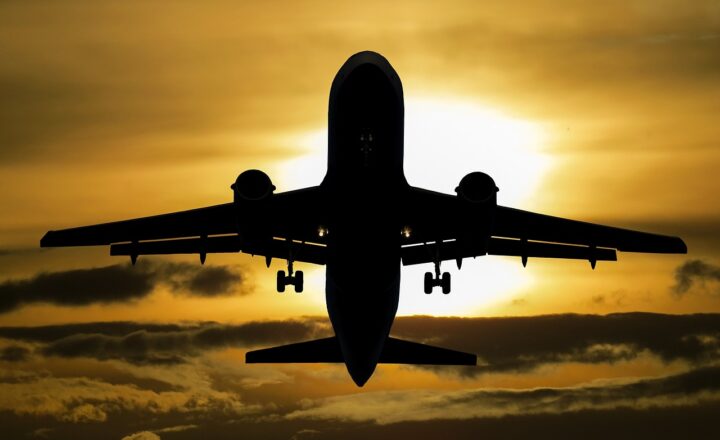Why Airplanes Don’t Just Fly Straight: The Science Behind Turbulence Explained
November 18, 2024

Flying is one of the most remarkable achievements of modern engineering, allowing us to traverse great distances in a fraction of the time it takes by other forms of transport. However, if you’ve ever been on a plane, chances are you’ve experienced turbulence—a bumpy ride that can cause unease among passengers. But why does it happen, and why don’t airplanes just fly in a straight line? This article dives deep into the science behind turbulence, exploring its causes, effects, and how pilots manage it.
1. Understanding the Basics of Flight
To comprehend turbulence, we first need to understand how airplanes achieve and maintain flight. The fundamental principles of aerodynamics are crucial:
- Lift: Airplanes fly thanks to lift, created by the shape of the wings, which forces air to move faster over the top than below. This pressure difference allows the aircraft to ascend and stay airborne.
- Thrust: Engines produce thrust, propelling the aircraft forward. The speed is critical as it influences lift generation.
- Drag: As planes move through the air, they encounter resistance. Minimizing drag is essential for fuel efficiency and flight speed.
- Weight: The total mass of the aircraft and its contents affects how much lift is needed for takeoff and flight maintenance.
Thus, the airplane operates on a delicate balance of these four forces. When it encounters turbulence, one or more of these forces may change rapidly, leading to the bumpy motion passengers feel.
2. What Causes Turbulence?
Turbulence can arise from a variety of factors, which can broadly be classified as follows:
- Atmospheric Conditions: Differences in air pressure, temperature, and wind speed can create disturbances. These include:
- Thermal Turbulence: Caused by hot air rising from the ground, leading to updrafts and downdrafts.
- Mechanical Turbulence: Generated as air flows over mountains, buildings, or other obstacles.
- Wind Shear: Sudden changes in wind speed or direction over short distances can cause intense turbulence, especially near thunderstorms or front systems.
- Wake Turbulence: When a large aircraft passes through the air, it leaves behind a wake of turbulent air. This can affect smaller planes following behind and is especially pertinent during takeoff and landing phases.
- Clear Air Turbulence (CAT): This occurs at high altitudes, often in clear skies, and is related to jet streams—narrow bands of fast-moving air high in the atmosphere. CAT can be unexpected and is one of the more challenging forms of turbulence for pilots to navigate.
These factors contribute to why airplanes do not simply fly in a straight, unobstructed manner; they must constantly adapt to fluctuating air conditions.
3. The Physics of Turbulence
Turbulence effects stem from the basic laws of physics. When aircraft fly, they generate disturbances in the air, influencing the flight path. This leads to varying pressure on different parts of the wing, affecting lift:
- Bernoulli’s Principle: As speed increases, pressure decreases. In turbulent air, varied speeds cause unpredictable pressure changes on the wings, leading to bumpy interactions with the airflow.
- Momentum Exchange: When an airplane travels from smooth air into turbulent air, the rapid change can make it momentarily lose or gain altitude, leading to the feeling of being jostled around in your seat.
Understanding these principles helps pilots anticipate and respond to turbulence, ensuring passenger safety and comfort.
4. Safety Measures in Turbulent Conditions
Despite the discomfort it may cause, turbulence is generally not a danger to flight. Here are some safety measures involving turbulence:
- Pilot Training: Pilots undergo specialized training in handling turbulence, preparing them for various conditions they may encounter during flights.
- Weather Patterns: Modern aircraft are equipped with advanced radar systems, which allow pilots to detect turbulence in advance and adjust their flight paths accordingly.
- Seatbelt Signage: During expected turbulence, pilots often turn on the seatbelt sign, warning passengers to fasten their belts for safety. Following cabin crew instructions is crucial to ensure passenger well-being during uncertain conditions.
- Aircraft Design: Airplanes are engineered to withstand significant turbulence. With a robust structure, they can handle various conditions, minimizing risk for those onboard.
Air travel, while occasionally bumpy, remains one of the safest modes of transportation due to meticulous protocols and technology.
5. Navigating Turbulence: How Pilots Respond
When pilots encounter turbulence, they employ several strategies to maintain control and comfort:
- Altitude Adjustment: If turbulence is persistent, pilots may request a change in altitude to find smoother air. This maneuver can often lead to a more comfortable experience for passengers.
- Speed Adjustment: Pilots may also change the speed of the aircraft to minimize the effects of turbulence. Slower speeds are generally used when crossing through turbulence.
- Communication: Pilots stay in contact with air traffic control and other pilots, sharing information about turbulence patches encountered. This collective knowledge allows for better planning and navigation around rough areas.
By proactively managing turbulence, pilots can help ensure a smoother journey.
Conclusion: Embracing Turbulence as a Part of Flight
In conclusion, turbulence is an inherent aspect of air travel, shaped by a multitude of factors, including atmospheric conditions and the principles of aerodynamics. While it can be uncomfortable, understanding the causes of turbulence and how pilots manage it can help assuage fears associated with flying. As we continue to explore the skies, it’s essential to recognize that airplanes are designed with this very challenge in mind.
The next time you buckle up in your seat and feel the plane jiggle, remember that it’s all part of the wondrous experience of flight—an adventure through layers of air that are everywhere, constantly shifting and forming.
It’s a testament to human ingenuity and the science behind our ability to soar through the skies, no matter the turbulence we may face.








